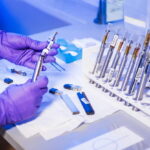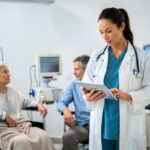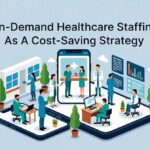Technology is constantly reshaping how medical professionals work and offer care in the ever-changing healthcare sector. Virtual medical scribing is one such technological breakthrough, which has grown in popularity and use in recent years. This article will examine virtual medical scribing, discussing its function, benefits, obstacles, and prospects.
Understanding the Role of a Virtual Medical Scribe
Medical scribes have traditionally worked alongside physicians, documenting patient visits and assisting with administrative responsibilities. However, the job has changed with the introduction of virtual medical scribing. Remote real-time support is provided by virtual medical scribes who are equipped with technology and specific training.
Advantages of Virtual Medical Scribing
Virtual medical scribing has various benefits that help to improve healthcare delivery and efficiency. Let’s look at some of these significant benefits:
Increased Flexibility and Accessibility
One of the most significant benefits of virtual medical scribing is the improved accessibility it provides. Remote scribing enables healthcare providers to obtain scribe services regardless of location. This is especially important in rural or underserved communities where healthcare providers may be scarce. Furthermore, virtual scribing allows for schedule flexibility, allowing healthcare professionals to use scribe services as needed.
Cost-effectiveness for Healthcare Providers
Healthcare organizations can save money by implementing virtual medical scribing. Employing virtual scribes allows providers to save the costs of in-person scribing, such as office space, equipment, and benefits. The virtual architecture also allows for scalability, enabling providers to adapt scribe support based on demand, maximizing resource allocation.
Reduced Physician Burden and Improved Workflow
Virtual medical scribes are critical in reducing the administrative strain on physicians. Scribes free up physicians’ time by performing documentation, data entry, and order administration, allowing them to focus more on direct patient care. This enhanced workflow can improve physician satisfaction and productivity, improving the overall treatment quality.
Potential for Improved Patient Care and Outcomes
Thanks to virtual medical scribing, physicians can spend more quality time with patients, actively listening and engaging in meaningful dialogues. By delegating documentation duties to scribes, physicians can maintain more critical eye contact, build stronger rapport, and ensure accurate patient data capture. This patient-centered approach can improve care coordination, clinical decision-making, and patient outcomes.
Challenges and Considerations
While virtual medical scribing has various advantages, it also has some drawbacks that must be addressed. To begin, ensuring the availability of proper technical infrastructure and secure platforms for seamless communication and data privacy is critical. Furthermore, comprehensive training programs are required to provide virtual scribes with the appropriate skills and knowledge.
Collaboration and clarity in the virtual environment require effective communication between scribes and physicians. To protect patient data, compliance with privacy standards such as the Health Insurance Portability and Accountability Act (HIPAA) must be a primary concern.
In Conclusion
Virtual medical scribing offers excellent potential to improve healthcare delivery. As technology progresses, virtual scribing will become essential to the healthcare scene. Healthcare companies can use virtual medical scribing to improve outcomes and provide superior care to patients by embracing the benefits, solving the difficulties, and applying best practices.
Read Also
- Creative Approaches to Alleviating Healthcare Staff ShortagesHospitals and clinics are facing staff shortages, which makes it harder to take care of patients well. Finding simple and useful solutions is very important. Easy changes like flexible work hours, good training, and chances to grow can help staff stay happy. Technology, like online doctor visits and helpful tools, can make work easier. Smart… Read more: Creative Approaches to Alleviating Healthcare Staff Shortages
- Understanding the Role of Sterilizers in Healthcare FacilitiesHave you ever wondered how hospitals keep their equipment safe enough to use on dozens of patients every day? Most people never think about what happens behind the scenes, yet these hidden steps play a huge role in patient safety. Sterilizers are part of that system, working quietly to remove harmful germs before any instrument… Read more: Understanding the Role of Sterilizers in Healthcare Facilities
- Building Healthcare Access Where It’s Needed Most: A Local First ApproachHealthcare shouldn’t depend on where you live. But in the U.S., it often does. If you’re in a big city, you likely have options. If you’re in a small town or an underserved neighbourhood, it’s a different story. To fix this, more healthcare leaders are turning to a local-first approach. That means putting clinics and… Read more: Building Healthcare Access Where It’s Needed Most: A Local First Approach
- Revolutionizing Patient Engagement: Innovative Solutions for Improved Care and Treatment SuccessNavigating healthcare system can often feel overwhelming for patients. Between appointments, prescriptions, and treatment regimens, it’s easy for crucial details to get lost in the shuffle. That’s why effective patient engagement and support solutions are more important than ever. Companies like Serva Health, with their pharma hub services, are stepping up to ensure that patients… Read more: Revolutionizing Patient Engagement: Innovative Solutions for Improved Care and Treatment Success
- On-Demand Healthcare Staffing As A Cost-Saving StrategyThis is an exciting and challenging time for the healthcare industry. Technology is advancing almost faster than humans can keep pace. New legislation is creating fresh challenges for the future of healthcare, and the shifting population demographic continues to place more pressure on healthcare facilities. Amidst these changes, healthcare facilities are facing a critical staffing… Read more: On-Demand Healthcare Staffing As A Cost-Saving Strategy
- The Benefits of Contract Labor Staffing in HealthcareThe most successful healthcare facilities today aren’t just reacting to crises—they are building workforce resilience to withstand them. Unpredictable patient demand, coupled with persistent nursing shortages, has made the traditional staffing model obsolete. Relying on mandatory overtime to cover a sudden surge in capacity is a recipe for high turnover and rising employee burnout relief… Read more: The Benefits of Contract Labor Staffing in Healthcare







